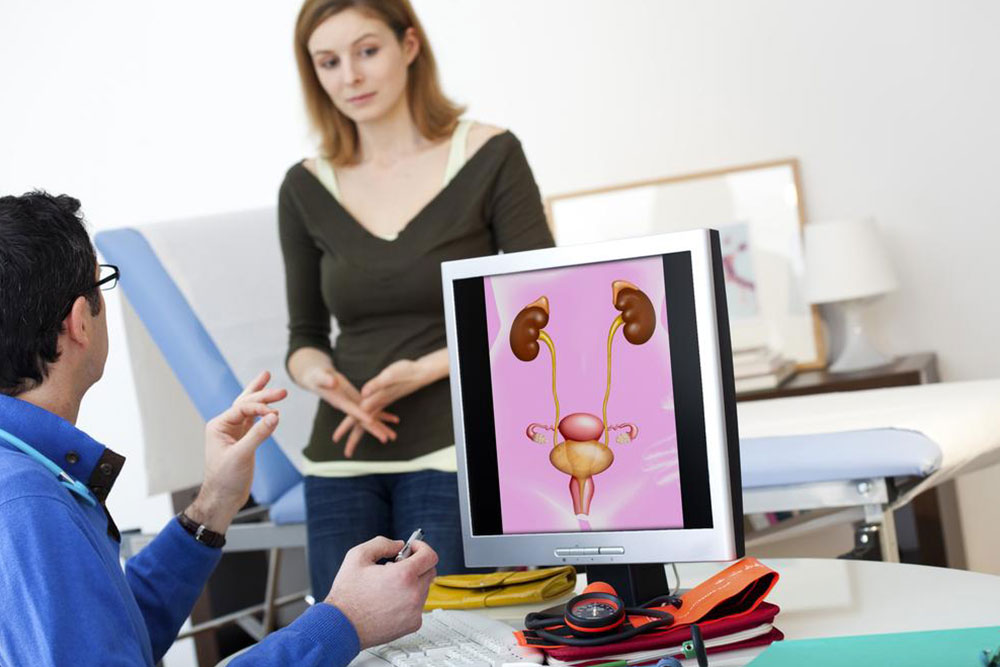Comprehensive Guide to Bladder Cancer: Recognizing Symptoms and Exploring Treatment Strategies
Bladder cancer is a serious condition caused by abnormal cell growth in the bladder lining. Early recognition of symptoms like blood in urine, difficulty urinating, and lower back pain is vital for timely diagnosis. Diagnostic tools include urine tests, ultrasounds, MRIs, and cystoscopy, which confirms the diagnosis through tissue analysis. Treatment varies based on cancer stage, ranging from minimally invasive procedures to complete bladder removal, complemented by immunotherapy, chemotherapy, and radiation. Early detection and personalized treatment significantly improve prognosis, and ongoing follow-up is essential for effective management. This comprehensive guide covers symptoms, diagnosis, treatment options, and living with bladder cancer, helping patients understand their condition better and make informed decisions for their health.

Comprehensive Guide to Bladder Cancer: Recognizing Symptoms and Exploring Treatment Strategies
Bladder cancer is a significant health concern characterized by the abnormal growth of cells within the bladder lining. This medical condition can develop silently, making early detection vital for successful treatment outcomes. Understanding the signs and symptoms associated with bladder cancer can lead to timely diagnosis and improve prognosis. The disease often presents with noticeable urinary symptoms, which should not be ignored. In addition, advances in medical science have expanded treatment options, including immunotherapy, chemotherapy, and surgical interventions, providing patients with a range of choices tailored to their specific condition.
Bladder cancer primarily originates in the tissues of the bladder, an organ located in the pelvis that stores urine. It is most common among older adults, especially those over the age of 55, and has a higher prevalence in men compared to women. Risk factors contributing to the development of bladder cancer include smoking, exposure to industrial chemicals, chronic bladder infections, and a history of radiation exposure. Recognizing early warning signs is essential, as early-stage bladder cancers are often more treatable and may be cured with prompt intervention.
Key Symptoms of Bladder Cancer
One of the hallmark symptoms of bladder cancer is hematuria, or blood in the urine. This can range from microscopic blood that is only detectable through laboratory testing to visible blood that causes the urine to appear red or rust-colored. Patients may notice this blood intermittently or consistently, especially when the tumor is actively bleeding. Changes in urination are also common; these include a persistent need to urinate more frequently, urgency that is difficult to control, and difficulty passing urine or a weak stream. These symptoms often mimic urinary tract infections but require thorough medical evaluation to distinguish their cause.
Other signs that may indicate bladder cancer include persistent lower back pain, especially in the region of the kidneys, swelling in the lower extremities, and unintentional weight loss. Some patients also report a sense of fullness or pressure in the pelvic area. Fatigue and general malaise may accompany these symptoms, particularly as the disease progresses. It’s important to consult with a healthcare professional if any of these symptoms persist, to ensure early diagnosis and management.
Diagnostic Techniques for Bladder Cancer
To confirm the presence of bladder cancer, healthcare providers employ a combination of diagnostic tools. Initial assessments include detailed medical histories and physical examinations, focusing on urinary and kidney health. Laboratory tests such as urinalysis are fundamental, helping to detect blood, infection, or abnormal cells in the urine sample.
Imaging studies play a crucial role in visualizing the bladder and adjacent structures. Ultrasound scans are often the first step, providing real-time images of the bladder wall and detecting abnormal growths. More advanced imaging options like computed tomography (CT) scans and magnetic resonance imaging (MRI) provide detailed cross-sectional images that can identify tumor size, location, and potential spread to nearby tissues or lymph nodes.
The definitive diagnosis of bladder cancer requires a cystoscopy, a procedure where a thin tube with a camera (cystoscope) is inserted through the urethra into the bladder. This allows direct visualization of abnormal tissue and facilitates the collection of biopsy samples. Histopathological examination of biopsy tissue determines the type and grade of cancer, which is essential for planning treatment.
Modern Treatment Approaches for Bladder Cancer
The management of bladder cancer depends largely on the stage and grade of the tumor, as well as the patient’s overall health. Early-stage bladder cancers, confined to the inner lining of the bladder, are usually treated effectively with minimally invasive procedures, including transurethral resection of the bladder tumor (TURBT). This procedure involves removing the tumor through the urethra using a special resectoscope.
Following surgical removal, intravesical therapy may be administered, where medications like Bacillus Calmette-Guérin (BCG) or chemotherapy agents are directly instilled into the bladder to reduce recurrence risk. For more advanced cases or tumors that invade deeper layers of the bladder wall, more aggressive treatments are necessary.
Surgical options range from partial cystectomy, removing part of the bladder, to radical cystectomy, which involves the complete removal of the bladder and nearby lymph nodes. In cases of bladder removal, urinary diversion procedures are performed to reroute urine flow using the intestines or by creating an external stoma.
In addition to surgery, emerging therapies contribute significantly to bladder cancer treatment. Immunotherapy, which boosts the patient’s immune system to target cancer cells, has become a promising approach, especially with the development of checkpoint inhibitors. Chemotherapy remains a vital component, either as a primary treatment or in conjunction with surgery and radiation.
Radiation therapy can be employed for patients who are not candidates for surgery or as an adjunct to other treatments. The outlook for patients diagnosed early and receiving comprehensive treatment is generally favorable, with high survival rates. Nonetheless, close follow-up and surveillance are critical to detect recurrences early.
Living with Bladder Cancer: Outlook and Support
Although a diagnosis of bladder cancer can be daunting, advances in medical science have improved survival rates significantly. Early detection and appropriate treatment are crucial factors in achieving a positive outcome. Patients are encouraged to undergo regular follow-up appointments, including cystoscopies, to monitor for any signs of recurrence.
Support groups and counseling services are vital resources for patients coping with the emotional and physical impacts of bladder cancer. Lifestyle modifications, such as quitting smoking, maintaining a healthy diet, and staying hydrated, can also improve overall health and potentially reduce the risk of recurrence.
It is essential for patients to work closely with their healthcare team to develop a tailored treatment plan and to understand the importance of adhering to follow-up schedules. With the right medical care, support systems, and lifestyle adjustments, many individuals with bladder cancer live full and active lives post-treatment.





